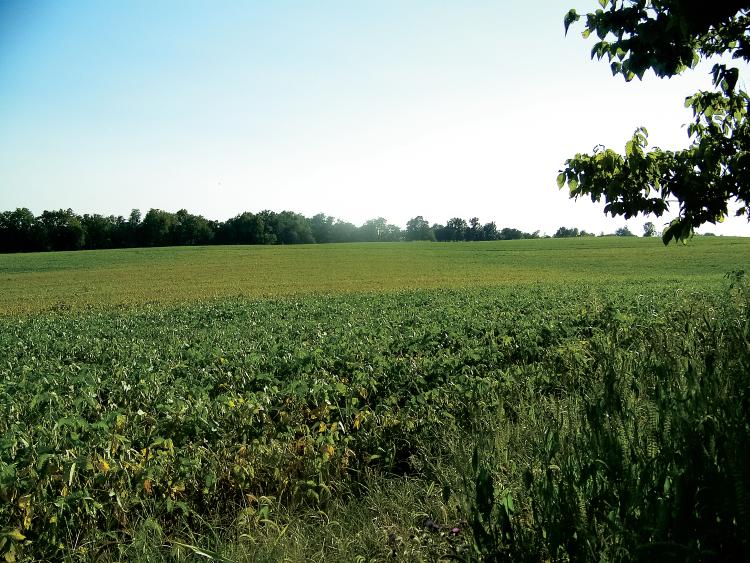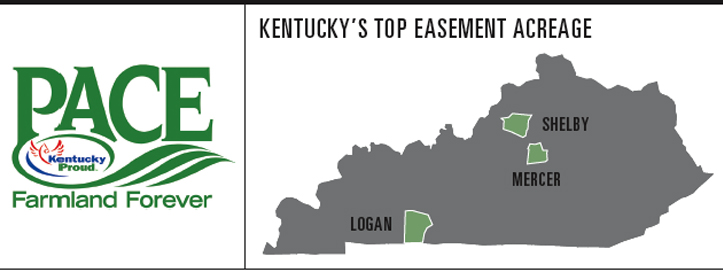Home > Kentucky > Kentucky Farm to Table > PACE Program Preserves Kentucky’s Farmlands
PACE Program Preserves Kentucky’s Farmlands

The crops and livestock that grow on acres of farmland across Kentucky provide food for consumers, raw materials for businesses and stimulus for the state’s economy. So when acres are sold to make way for a different kind of growth – residential and commercial development – it can carry a hefty and long-term price tag.
That’s because the loss of farmland, and the benefits it provides for consumers and communities, is permanent. Add to that the costs needed to provide services for new developments, from sewers and roads to police and fire protection, and it’s easy to see that the loss of farmland is a costly proposition for communities. But the sale of that land may also be an opportunity for farm families to pay off debt, finance new purchases or settle an inheritance.
To address these concerns and encourage the preservation of agricultural land across the state, the Kentucky General Assembly established the Purchase of Agricultural Conservation Easement (PACE) Corporation in 1994. The program uses protective easements, which are basically contracts between the property owner and the government, to preserve the land for agricultural use. The landowners agree that they won’t develop their land. In turn, they receive a benefit – either through a direct payment or through tax breaks.
“The program is important because it recognizes the economic and cultural value of the family farm. At the same time, it allows the owner to capitalize on their asset without liquidating it,” says Adam Watson of the Kentucky Department of Agriculture. “For some farmers, that means they can basically use the equity they have in their farmland to send their children to college or expand their operations or even provide the finances to bring in the next generation of farmers.”
It Pays to Donate
Although PACE was established to purchase conservation easements, landowners are also encouraged to donate easements in order to dedicate their land to agricultural uses. Those who make such donations may receive federal and state income tax and estate tax benefits.
Since the program began, nearly $20 million has been spent to purchase 96 easements, and 66 easements have been donated. That’s 162 easements, or nearly 32,000 acres, in 31 counties across the state, with Logan, Mercer, and Shelby counties having the largest easement acreage.
Another important aspect of the program, says Watson, is the agreement with Fort Campbell’s Army Compatible Use Buffer (ACUB) program, which allows for easements to prevent development in the flight paths of the rotary-winged aircraft used there. PACE is a cooperating partner with the U.S. Department of Defense and currently holds nine easements purchased through an agreement with ACUB. “These properties are some of the best soils for farming in the entire state, so it’s a win-win situation for both partners,” says Watson.

Valued Acres
Easement value is determined using two figures: (1) the fair market value of the land according to its development potential and (2) the value of the land if its use is restricted to agriculture. The easement value falls somewhere between the two and is negotiated between the landowner and the PACE board.
For instance, a 200-acre farm appraised at $2,500 per acre if sold for development and valued at $1,200 per acre if maintained as farmland could provide a farmer with a $180,000 federal tax deduction over six years and a similar deduction in state tax.
Since each farm and each owner is unique and tax regulations often change, the best way to determine the value of an easement is to consult a tax professional.
Applications for easements, which are available online at www.kyagr.com, are ranked annually on Jan. 1 and July 1. To be considered for the January ranking, applications must be postmarked by Sept. 30. A postmark date of March 31 is required for the July ranking.



